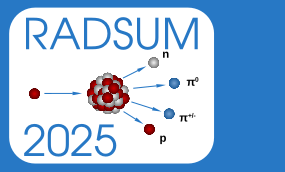Speaker
Description
The Paul Scherrer Institute (PSI) operates the world’s most powerful continuous beam proton accelerator, capable of delivering a beam current of up to 2.4 mA with a beam power of 1.4 MW. The proton beam is directed at two carbon targets, generating a large flux of pions and muons. The interaction between the beam and the targets, along with beam scattering, results in a significant radiation load on the surrounding components. The radiation impacts the magnets along both the primary and secondary beamlines. In the context of the IMPACT project, PSI is set to install a new target along with upgraded secondary beamlines. With plans to increase the beam current to a maximum of 3 mA, the radiation load on critical components will remain substantial.
This presentation will introduce the PSI facilities, outline the major challenges encountered in magnet design for their high-radiation environment, and discuss the technical solutions chosen to ensure the long-term operational stability of the new secondary beamlines. It will also focus on the current efforts to install superconducting magnets in the proton accelerator facility in the context of the HiMB project.
